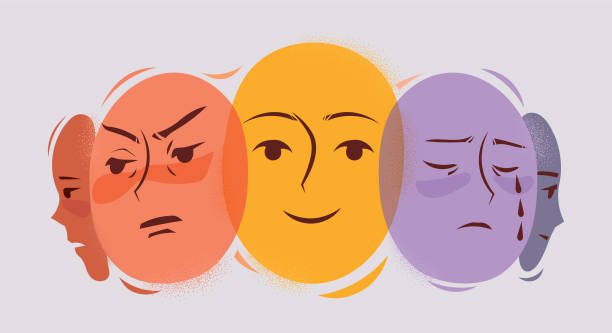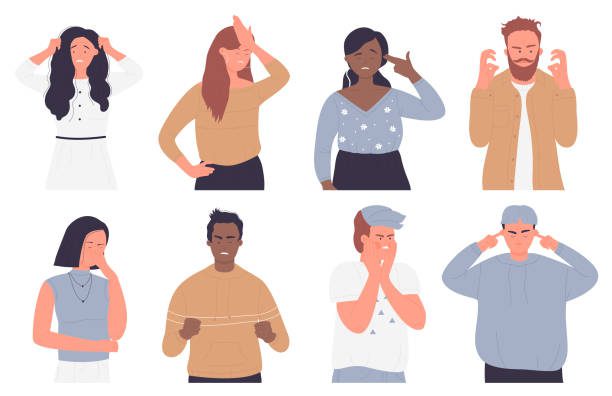This content is for informational and educational purposes only. Always consult a qualified healthcare provider.
Last Updated on April 19, 2024 by Grace Oluchi
Feelings are super important. They shape how we think, act, and vibe with others. Sometimes they hit us hard and fast, other times they hang around and set the mood. Sharing how we feel can be tough, but it’s nice to keep it real with people and make friendships that last.
Listen To This Article.
📋 Table of Contents
The Key Takeaway.
Paul Ekman’s research is super interesting! He found out that no matter where you’re from, everyone gets these five basic feels: anger, disgust, fear, happiness, and sadness. They’re built into us from the get-go and show up on our faces in ways that everyone can spot, like a smile for joy or a frown for the sadness. It’s like we’ve all got this universal language of emotions written right on our faces.
What are Emotions?
Feelings can be a wild ride, and sometimes they overwhelm us. But they’re a big part of what makes you, you. Getting good at dealing with feelings means figuring out what you’re feeling—like being mad, down, or stressed—and why. Once you get that, you can start sorting through those feelings. You don’t even have to go it alone.
Paul Ekman, this genius on feelings, made the “Atlas of Emotions” with help from a bunch of scientists. It’s like a map for your feelings, helping you get the hang of them, especially if they’re giving you a hard time.
Feelings are complex, no doubt. But you can totally get better at handling them by recognizing and naming them, and not being shy to lean on others. The “Atlas of Emotions” is a solid tool for this journey. Stick with it, and talking about your feelings will get easier, promise.
What are the 5 Types of Emotions?


The emotions are put into five groups by this interactive online tool. The emotions are:
- Anger
- Fear
- Sadness
- Disgust
- Enjoyment
What you Should Know About the 5 List of Emotions.
Ekman’s five categories are not the only way to look at them. A 2017 study said there could be as many as 27 different types of feels. It’s like, emotions are way more colorful and all over the place than we thought. LOL! But, Ekman’s model is like a quick-start guide—it helps us get the gist without getting lost in the details.
The List of Emotions.
See below:
1. Enjoyment.


Enjoyment is like that awesome feeling when everything’s just right. You’re happy, chilled out, and everything feels positive. It’s what you feel when you’re grinning, laughing, or just doing something nice for yourself.
To shout out how great you’re feeling, you can use words like:
- Happiness
- Love
- Relief
- Contentment
- Amusement
- Joy
- Pride
- Excitement
- Peace
- Satisfaction
But if you’re not feeling the joy, it could be ’cause other stuff is getting in the way. Maybe you can’t focus, you’re anxious, stressed, or feeling a bit uneasy. If that’s the case, take a moment to figure out what’s messing with your good vibes.
2. Sadness.


Feeling blue is something we all go through. It could be because of something that went wrong, like getting turned down or losing someone, or sometimes you just feel down and don’t know why. When you’re sad, you might feel:
- Lonely
- Heartbroken
- Disappointed
- Hopeless
- Grieved
- Unhappy
- Lost
- Troubled
- Resigned
- Miserable
Getting past sadness isn’t always easy, but there are ways to deal with it. Letting yourself mourn is part of healing, especially when you’ve lost someone. It’s okay to take time to feel the loss and find your own way to get through it.
Doing stuff that matters, like volunteering or finishing something a loved one cared about, can help you feel connected again. And don’t forget to reach out to others for a chat—it’s hard but totally worth it. If the sadness sticks around and starts messing with your day-to-day, talking to a therapist can help.
3. Fear.


Fear’s like that alarm in your head that goes off when you think something’s up. It can be a little whisper or a full-on scream, and sometimes it freaks you out even when there’s no real danger. It shows up in all sorts of ways, like:
- Worry
- Nervousness
- Anxiety
- Terror
- Panic
- Horror
- Desperation
- Confusion
- Stress
Feeling scared is totally normal, and there are tricks to keep it in check. Here:
- Face it head-on: Like getting back behind the wheel if driving makes you afraid.
- Switch up your focus: listen to an audiobook, cook up something yummy, or sweat it out with a workout.
- Think it through: Break down what’s freaking you out and see if it really adds up.
4. Anger.


Anger’s like a red flag that pops up when you feel someone’s crossed the line or you’re in a bad spot. It’s totally normal and can actually be a heads-up to do something about it. When you’re angry, you might feel:
- Frustration
- Bitterness
- Irritation
But here’s how you can handle the heat without losing your cool:
- Take a time-out: Step back from what’s bugging you to get a fresh look at things.
- Talk it out: Letting people know what’s up, without blowing up, can smooth things over and even make bonds stronger.
- Be a problem-solver: talk about what’s angering you and think of ways to fix it.
- Get some backup: If anger remains, a therapist can help you find ways to deal with it.
5. Disgust.


Disgust is like your mind’s way of saying “nope” to stuff that grosses you out. It’s a defense mechanism, but sometimes it can make you judge things or people too harshly. When you’re feeling disgusted, you might get hit with feelings like:
- Revulsion
- Loathing
- Discomfort
But here’s how you can deal with it:
- Show some heart: Try to see things from a kinder perspective.
- Look at the actions, not the actor: It’s about what’s done, not who’s doing it.
- Ease into it: Gradually face what’s bugging you to get more comfortable.
And if you’re really struggling, especially with feelings towards others or yourself, talking to a therapist can help you sort through those icky feelings and find better ways to handle them.

